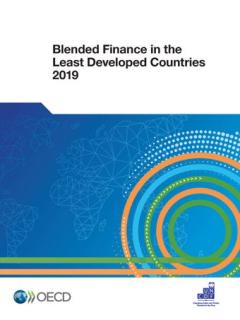
The world’s 47 least developed countries (LDCs) are among those most at risk of being left behind. While official development assistance and domestic public resources remain essential for their development prospects, they alone will not be sufficient to meet the Sustainable Development Goals. With the Addis Ababa Action Agenda, the international community acknowledged the need for significant additional public and private finance, and development partners are increasingly focusing on blended approaches. What are the trends in blended finance for LDCs? What can it achieve and how? The OECD and UNCDF are working together to shed new light on these issues.
Building on a 2018 publication, Blended Finance in the Least Developed Countries 2019 presents the latest data available on private finance mobilised in developing countries by official development finance, extending the previous analysis to cover 2016 and 2017 as well as longer-term trends from 2012 to 2017. It discusses the most recent international policy trends shaping the blended finance market, and what these might mean for LDCs. Stakeholders and practitioners also share their views on the challenges and opportunities in designing and implementing blended finance operations in LDCs.
